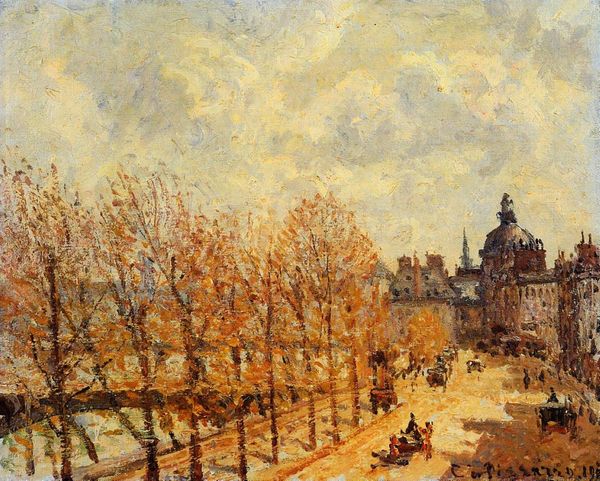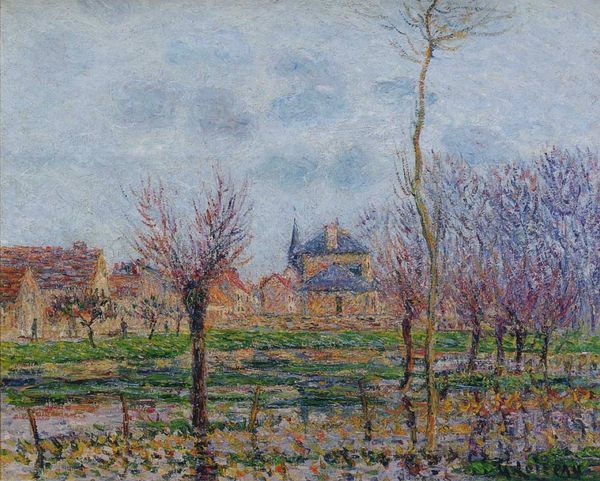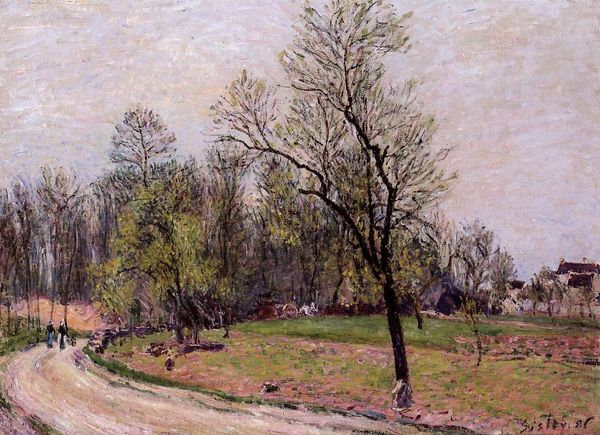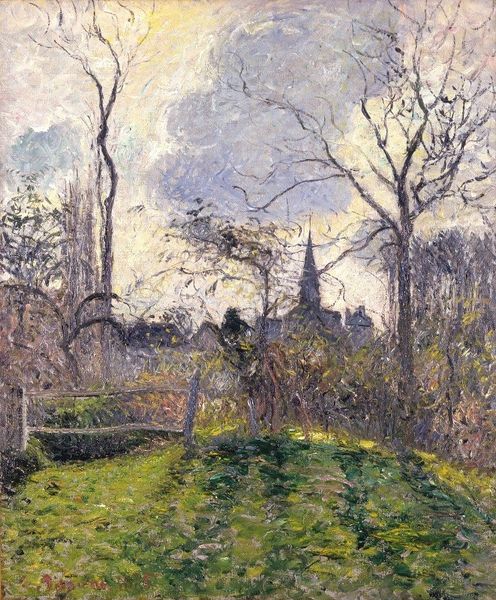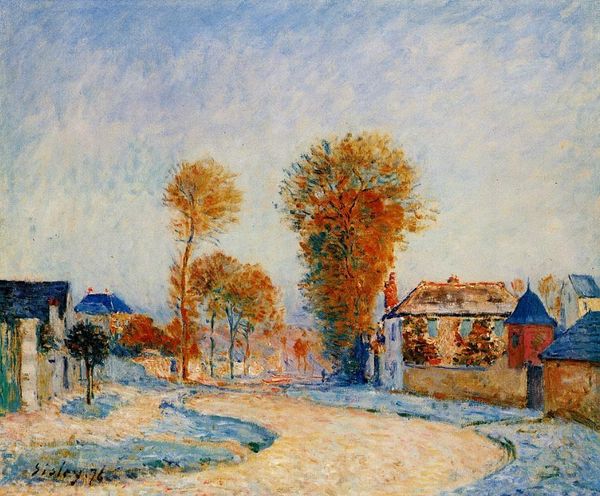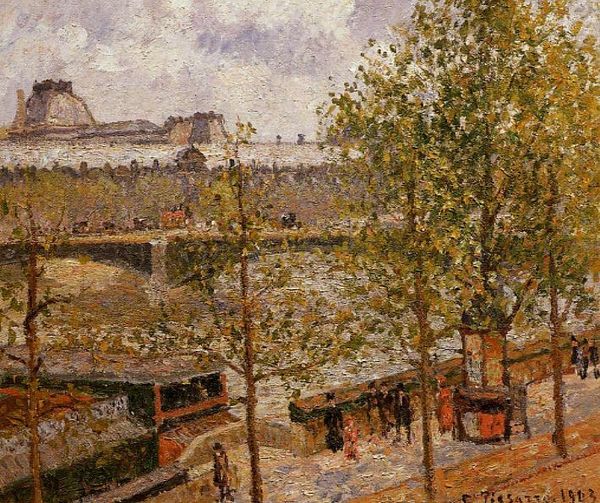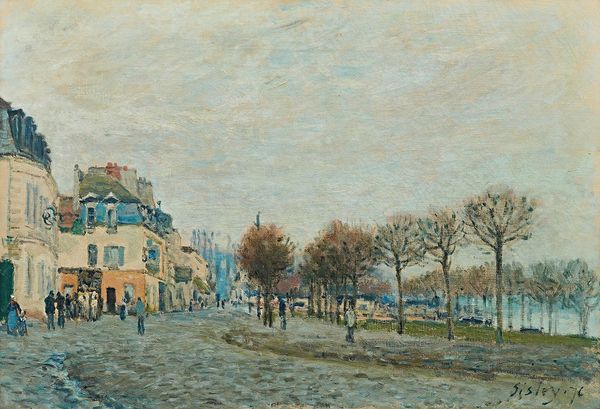
Dimensions: 54.5 x 65.5 cm
Copyright: Public domain
Editor: We’re looking at Camille Pissarro’s "Quai Malaquais, Morning," painted in 1903. It's an oil painting showing a Parisian street in the early morning. The color palette feels so muted and tranquil, yet somehow bustling at the same time. How do you interpret this work in relation to its historical context? Curator: Well, Pissarro, as an Impressionist, was interested in capturing the fleeting moments of modern life. Consider that this was painted in 1903; Paris was undergoing massive urban restructuring. So, while it appears peaceful, there’s a subtext of rapid change, almost a negotiation between nature and the developing metropolis. Note how the bare trees line the avenue. How do you think those choices influence our perception of Paris at this time? Editor: They create a sense of transition, don't they? Between seasons, between rural past and urban future. Curator: Exactly. And it is not just the visual portrayal, but the institutional factors playing their role. Paintings like this reinforced an image of Paris as a modern, vibrant city. How the paintings were collected and displayed also helped cement that cultural identity. It's interesting to consider how artistic visions and civic identity were so intertwined, shaping public perception of city development at the turn of the century. Do you agree? Editor: I do. So the painting isn’t just an observation, it’s also actively shaping the narrative. That's quite fascinating. Curator: Precisely. Considering who was commissioning and collecting works of this nature, allows a deeper insight into the values held during the era. It provides context of the values esteemed and those ignored at the time. Editor: I had never thought about the power of landscape painting in constructing identity! Thanks for opening my eyes to that. Curator: My pleasure. It is the magic and lasting impact art has on society.
Comments
No comments
Be the first to comment and join the conversation on the ultimate creative platform.
